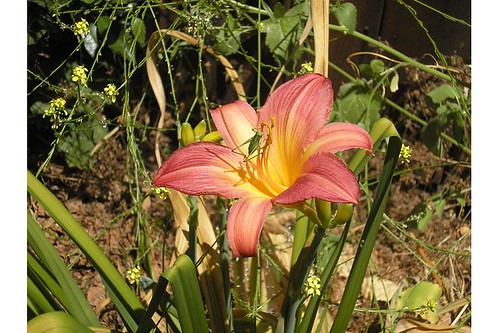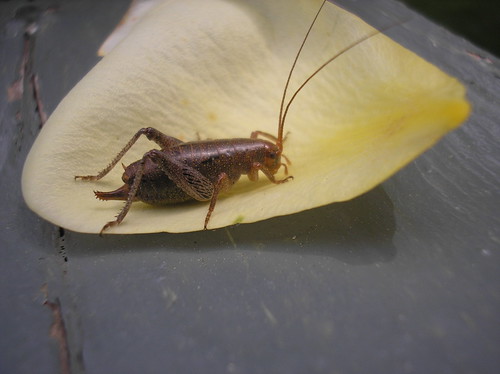
Summer Series #10
Crickets, Grasshoppers, and Katydids
(See Challenge #24 Crickets.)
Train Your Senses
- Sight: Look for grasshoppers, katydids, and crickets in your yard. Observe them with a hand lens. Look at a grasshopper jump.
- Hearing: Listen for the chirping of a cricket or katydids and see if you can follow the direction.
1.Read in the Handbook of Nature Study pages 338-350 (Lessons 80-82). This a lot of information so you might want to break this challenge up over several weeks so you can read, choose some of the suggestions for observation, spend your time outdoors, and then move onto the next insect.

Most of us have heard crickets in the evenings and children will be very interested to learn more about these insects that play music with their legs for us to enjoy. Here is a link to a YouTube.com video that shows what a cricket looks like when he is singing: http://www.youtube.com/watch?v=8E6q9W8Ur2k
Katydid Sounds click HERE. Cricket sounds HERE.

2. Read in Discover Nature at Sundown pages 174-188. There are many suggestions for exploring the hopper’s world and you may wish to choose one or two to try with your family. You can collect a grasshopper and keep it for a few hours to observe it up close. Use your hand lens to complete the “Closer Look” activity on page 183.
Outdoor Hour Time:
Try to spend some of your outdoor time in the evening air. Our family likes to sit on our deck and watch as the stars come out after sunset. This is a perfect activity to couple with listening for crickets because it is just about at the same time that you will begin to hear crickets singing their evening songs. You can also spend fifteen minutes looking for grasshoppers or crickets in your yard or a near-by park. This challenge can be split up into two weeks if you want to really study each insect.

Follow-Up Activity:
After your observations and outdoor time, have your child tell you some of the things he remembers about the nature study. After you have your outdoor time, provide an opportunity for working on a nature journal entry. Use the Handbook of Nature Study or a library book to find an illustration or photo of an actual cricket to draw in your journal. Have your child label the entry with a title, the date, and the place that you made your observation. Parents can always help the child with this part if needed.
There are also coloring pages included in the Summer Series ebook for the cricket, the grasshopper, and the katydid.

Post an entry on your blog sharing your experiences. You can link up by clicking the carnival button or you can send them directly to me: harmonyfinearts@yahoo.com.
If you would like all the Summer Series Challenges in one place, I have an ebook gathered for you to purchase for your convenience. Here is a link to a complete description:
Summer Series of Outdoor Hour Challenges


We must be in thought-sync this week, as I was thinking about comparing/contrasting those very same insects. We probably won't get to it, however, because we have some very busy weeks ahead.
ReplyDeleteTake care.
Hello Barb, I'm from Germany, but living in the U.S. (I also know you from Buntglas). I showed my children the different cricket sounds from Germany. They thought they were very interesting, especially the Great Green Bush Cricket.
ReplyDeleteIt's been wonderful to have your summer ebook because we've had a very clever cricket that decided to take up residence several weeks ago. Still having fun with this but finished up the study.
ReplyDeleteCan't really say that no insects were harmed in the filming of this post - poor bob lost a leg. . . We used to catch crickets for our lizards the last 5 years - the boys are just about cricket /grasshopper experts now!
ReplyDeleteWe found an amazingly big cricket last Friday. It was about 10 cm, that is about 4 inches. It was a female Great Green Bush Cricket. Probably pregnant with many eggs. On our photo you see her long 'tail' or 'tube' with which she 'injects' her eggs in soil.
ReplyDeleteEew! The thought of a 4 inch cricket is enough to give me the creepy crawlies! And I usually don't mind bugs :)
ReplyDeleteThanks for the challenges Barb!
I'm surprised at how many grasshoppers we've been seeing this fall. Learned things about them that I had never learned before. The Handbook of Nature Study is an amazing resource!
ReplyDelete